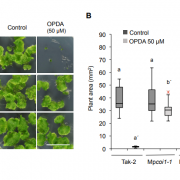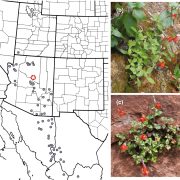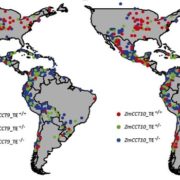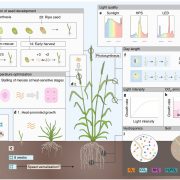Sunflower pan-genome, evidence for hybridization-altered disease resistance ($)
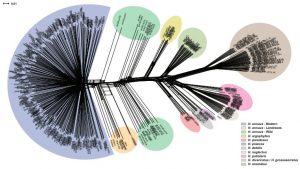 Sunflower (Helianthus annuus L.) is an important oil-producing crop, which was domisticated in North America about 4000 years ago with elite varities being developed through the 19th and 20th centuries, narrowing its genetic variation. It retains the ability to hybridize with wild relatives, providing opportunities to introgress desirable traits. Hübner et al. sequenced and analyzed nearly 12 trillion bases (!) from 493 sunflower accessions (landraces, modern cultivars and wild relatives). Through these efforts, they identified the “pan genome” or set of all genes of cultivated sunflower. They also identified genomic regions that had been introgressed from wild relatives, and regions that show an association with resistance to downy mildew disease. These data provide insights into the genetic diversity of cultivated sunflower. (Summary by Mary Williams) Nature Plants 10.1038/s41477-018-0329-0
Sunflower (Helianthus annuus L.) is an important oil-producing crop, which was domisticated in North America about 4000 years ago with elite varities being developed through the 19th and 20th centuries, narrowing its genetic variation. It retains the ability to hybridize with wild relatives, providing opportunities to introgress desirable traits. Hübner et al. sequenced and analyzed nearly 12 trillion bases (!) from 493 sunflower accessions (landraces, modern cultivars and wild relatives). Through these efforts, they identified the “pan genome” or set of all genes of cultivated sunflower. They also identified genomic regions that had been introgressed from wild relatives, and regions that show an association with resistance to downy mildew disease. These data provide insights into the genetic diversity of cultivated sunflower. (Summary by Mary Williams) Nature Plants 10.1038/s41477-018-0329-0


